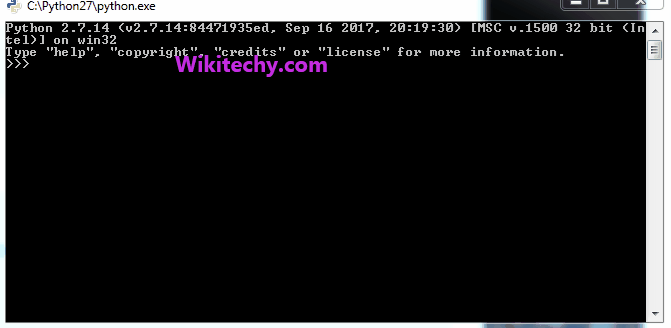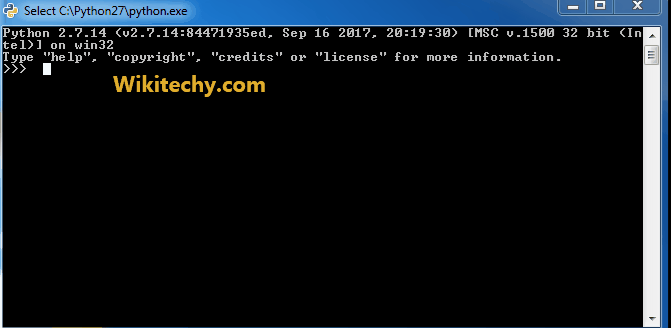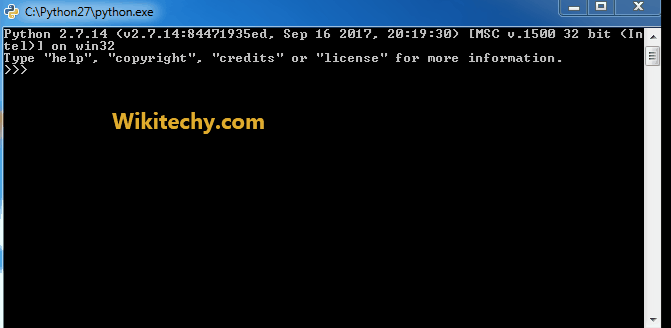1. “in” operator :- This operator is used to check if an element is present in the list or not. Returns true if element is present in list else returns false.
2. “not in” operator :- This operator is used to check if an element is not present in the list or not. Returns true if element is not present in list else returns false.

Learn Python - Python tutorial - python listmethod - Python examples - Python programs
python - Sample - python code :
# Python code to demonstrate the working of
# "in" and "not in"
# initializing list
lis = [1, 4, 3, 2, 5]
# checking if 4 is in list using "in"
if 4 in lis:
print ("List is having element with value 4")
else : print ("List is not having element with value 4")
# checking if 4 is not list using "not in"
if 4 not in lis:
print ("List is not having element with value 4")
else : print ("List is having element with value 4")
click below button to copy the code. By Python tutorial team
python programming - Output :
List is having element with value 4
List is having element with value 43. len() :- This function returns the length of list.
4. min() :- This function returns the minimum element of list.
5. max() :- This function returns the maximum element of list.

Learn Python - Python tutorial - python list - Python examples - Python programs
python - Sample - python code :
# Python code to demonstrate the working of
# len(), min() and max()
# initializing list 1
lis = [2, 1, 3, 5, 4]
# using len() to print length of list
print ("The length of list is : ", end="")
print (len(lis))
# using min() to print minimum element of list
print ("The minimum element of list is : ", end="")
print (min(lis))
# using max() to print maximum element of list
print ("The maximum element of list is : ", end="")
print (max(lis))click below button to copy the code. By Python tutorial team
python programming - Output :
The length of list is : 5
The minimum element of list is : 1
The maximum element of list is : 56. “+” operator :- This operator is used to concatenate two lists into a single list.
7. “*” operator :- This operator is used to multiply the list “n” times and return the single list.
python - Sample - python code :
# Python code to demonstrate the working of
# "+" and "*"
# initializing list 1
lis = [1, 2, 3]
# initializing list 2
lis1 = [4, 5, 6]
# using "+" to concatenate lists
lis2= lis + lis1
# priting concatenated lists
print ("list after concatenation is : ", end="")
for i in range(0,len(lis2)):
print (lis2[i], end=" ")
print ("\r")
#using '*' to combine lists
lis3 = lis * 3
# priting combined lists
print ("list after combining is : ", end="")
for i in range(0,len(lis3)):
print (lis3[i], end=" ")click below button to copy the code. By Python tutorial team
python programming - Output :
list after concatenation is : 1 2 3 4 5 6
list after combining is : 1 2 3 1 2 3 1 2 3 8. index(ele, beg, end) :- This function returns the index of first occurrence of element after beg and before end.
9. count() :- This function counts the number of occurrences of elements in list.

Learn Python - Python tutorial - python list - Python examples - Python programs
python - Sample - python code :
# Python code to demonstrate the working of
# index() and count()
# initializing list 1
lis = [2, 1, 3, 5, 4, 3]
# using index() to print first occurrence of 3
# prints 5
print ("The first occurrence of 3 after 3rd position is : ", end="")
print (lis.index(3, 3, 6))
# using count() to count number of occurrence of 3
print ("The number of occurrences of 3 is : ", end="")
print (lis.count(3))click below button to copy the code. By Python tutorial team
python programming - Output :
The first occurrence of 3 after 3rd position is : 5
The number of occurrences of 3 is : 2